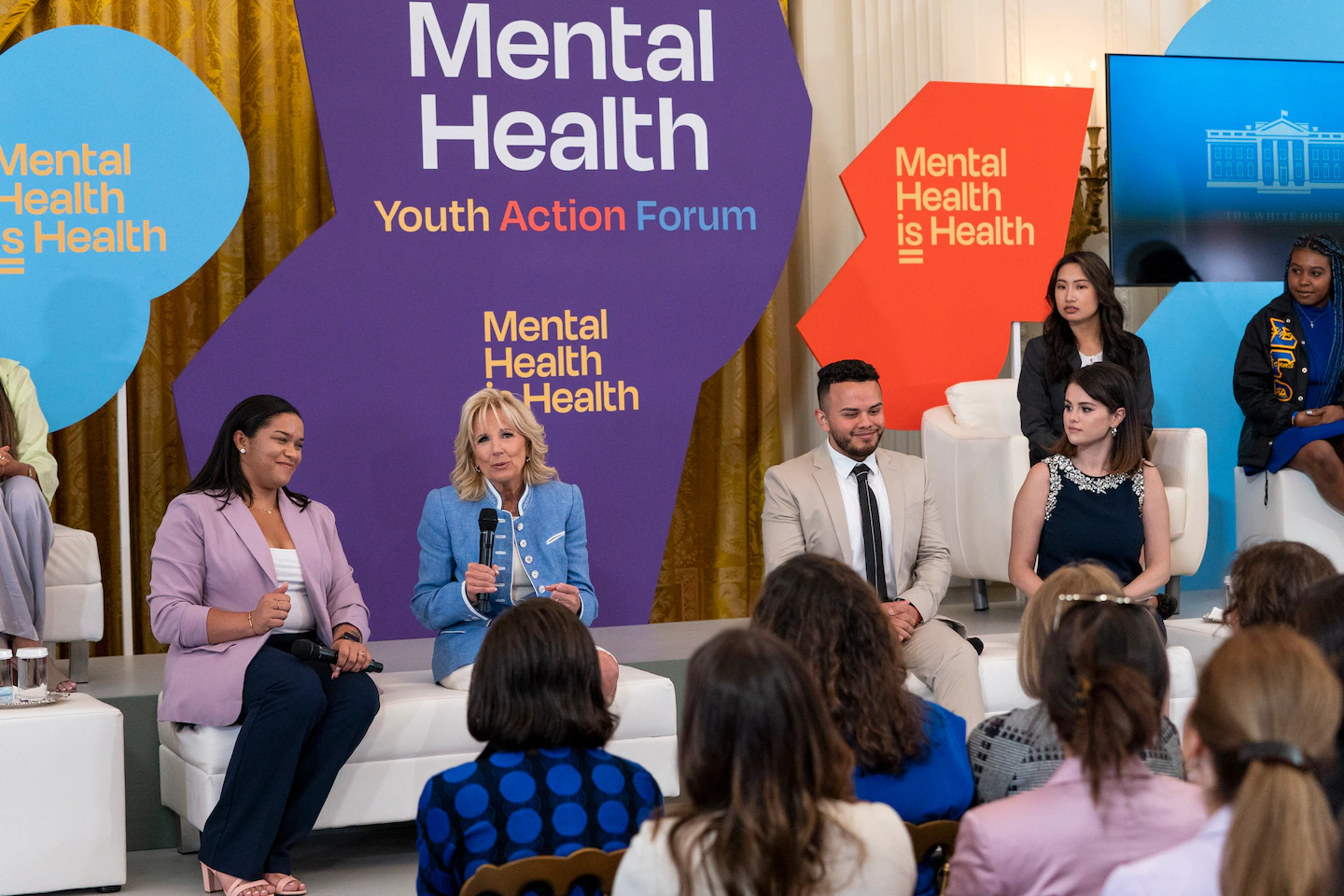[ad_1]
President Biden has advocated for mental health reform, but historically, presidents have struggled to build political will to pass meaningful legislation.
And yet, this time the political will — despite all the volatility — seems more intent on meeting the challenge. It’s not just that conversations about mental health are breaking out of hushed silos. There also seems to be political support across party lines for funding local communities. Along with the robust engagement of activists with the lived experience of recovery, and families managing mental health challenges, there is a rising tide insisting that mental health is foundational, not adjacent, to overall health.
President John F. Kennedy was the first president to push for legislation to secure mental health treatment. In the early 1960s, addiction, depression, suicide and other mental health crises were not openly discussed. About 550,000 American adults and children lived in 279 state institutions, most of which were overcrowded fire and health hazards. Many of the patients had become “warehoused” and were presumed to be lifelong residents who could not get better.
The Kennedy family, for all its wealth and influence, was not removed from these challenges. Ever present in the president’s life was a quiet but pervasive sadness about his sister Rosemary, who had been placed in an institution after a lobotomy. His ambitions for people like her — and the lives they could lead if given the chance — led him to take this subject seriously. He made it his personal mission to change how people with a diagnosis were treated.
Under the influence of Robert Felix, a doctor and the former president of the American Psychiatric Association who led the National Institute of Mental Health, Kennedy addressed both houses of Congress in 1963 to urge action on mental health. He explained how state hospitals throughout the nation routinely left patients at the “mercy of custodial isolation” where they would “wither away.” It was a stain and a shame on the nation, he argued, and he considered the failure of institutionalization among the nation’s “most urgent problems.”
On Oct. 31, 1963, he signed the Community Mental Health Act (CMHA) which called for the construction of 1,600 community-based service centers across the United States. His assassination three weeks later, however, changed everything. His successor, Lyndon B. Johnson’s escalation of the war in Vietnam starved the funding for all of his domestic policy priorities — including the CMHA system. Funding for the CMHA trickled and national priorities changed. Barely one-third of the called-for 1,600 community centers were built.
Jimmy Carter was the next president to make mental health reform a priority. He too had a family experience that inspired him to act. His cousin Tommy was in and out of the state hospital in Milledgeville, Ga., for years. But it was Carter’s wife, Rosalynn, whose interest and influence led this charge. Although nepotism laws prevented her from officially chairing the President’s Commission on Mental Health, she played a key role in guiding congressional hearings and mustering public and political influence to pass the Mental Health Systems Act of 1980.
The act called for a partnership between the federal government and the states to develop models for care and to minimize the need for involuntary institutional confinement. At a time when there seemed to be no accountability for the thousands of patients that state hospitals had already discharged with little attention to their aftercare, the new law offered a national plan for funding a system that could improve lives.
Although the MHSA had near unanimous support in both the House (277 to 15) and the Senate (97 to 3), the election of Ronald Reagan as president brought this singular opportunity to an abrupt end. As he had done when he was California’s governor, Reagan opposed using government funds to help people with disabilities, including mental illness. He extinguished the $500 million budgeted to implement the sweeping reforms of his predecessor and pulled the federal government out of direct spending for services. Instead, the 1981 Omnibus Budget Reconciliation Act provided block funds to the states, merging research and services for mental health and addictions with those for black lung disease, rodent control, blood pressure reduction programs and lead abatement — all but guaranteeing mental health would be overlooked.
But despite these budget cuts, things began to change over the next two decades as medical, psychological and political fields began to think differently about mental health and increasingly saw the essential, holistic relationship between our mental health and our whole health. This sea change was confirmed with the 1999 release of the Surgeon General’s report on mental health which showed that people diagnosed with mental health problems could recover and that such a diagnosis didn’t have to be a life sentence. That report coincided with the Supreme Court’s 1999 Olmstead v. L.C. decision, an affirmation of the Americans With Disabilities Act, which decreed that people with a diagnosis of “mental illness” or other disability should not remain institutionalized when they could live in the community.
President George W. Bush carried these accomplishments forward when he championed the implementation of the Olmstead decision. His commission, the President’s New Freedom Commission, wanted to lay the groundwork in 2002 to help people with disabilities live, work, learn and participate fully in their communities.
Bush’s ideals were ambitious but never fully realized. Despite the articulation of admirable goals and principles — for the first time by a Republican president who had openly acknowledged his own recovery from alcohol misuse — change happened incrementally. Obstacles had been built into a system that remained fragmented, marked by financial and racial disparities and unaccountable to recovery principles. These made the ultimate goal of a transformation difficult to achieve.
Now, 20 years later, the pandemic has revealed that essential services remain wanting. Yet, significantly, the public more openly discusses the imperative of mental health treatments. The issue is ubiquitous, for instance, as seen in advertising for new medicines aired during nightly television. Elements of previous plans for change have garnered a wider acceptance and generated the political will for funding the proposals in Biden’s 2021 stimulus package, the American Rescue Plan (ARP).
The ARP allotted $4 billion to improve mental health treatments and services, it expands access to care and it helps states plan community-based crisis services through their Medicaid offices. Funding packages underwrite the Substance Abuse and Mental Health Services Agency’s (SAMHSA) new suicide and behavioral health crisis line, 988. The Department of Veterans Affairs received ARP funding to expand its hugely successful network of peer service providers (people with a lived experience of behavioral health recovery) by adding 277 of these positions. And the ARP budgets $300 million for youth mental health services in schools, which is critical for identifying the earliest opportunity to help someone who is struggling.
No one can declare whether the measure has been a success yet, but implementation of the ARP, which is now underway in various agencies, would enact the goals and even some of the programs Kennedy, Carter and Bush had long envisioned. Unlike years ago, when mental health was considered adjacent to rather than essential for overall health, there is now an appreciation that mental health belongs in the mainstream of health care and that we can use the infrastructure to achieve an equitable, accessible and comprehensive approach without delay.
[ad_2]
Source link



